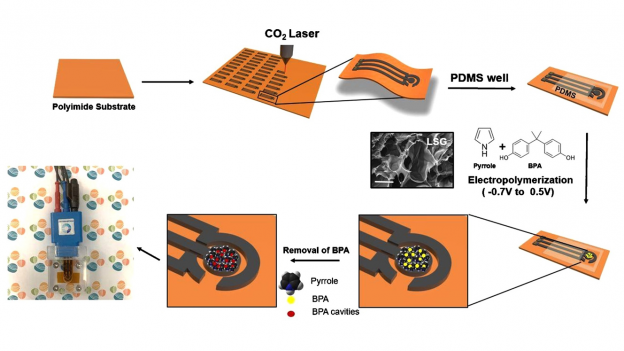Water is A Prized Resource – But Only If It’s Clean!
In today’s world, it should come as no surprise that plastic dominates the products that we rely on each and every day. From our technology devices, to our water bottles, plastic is almost always an integral structural component. Due to our massive reliance on plastics as it relates to manufacturing and production, finding its presence in our water sources also shouldn’t come as much of a surprise. “Let’s think about it, plastic is found in almost anything and everything water bottles, baby bottles, canned food, milk packages, plastic bags, and so much more,” says KAUST's PhD student Tutku Beduk. “In fact, the Ocean Conservancy estimates that every year, anywhere between 8 to 12 million tons of plastic enter into our ocean,” she says.
Not only is this a scary sight to imagine, but it’s a scary sight to see – especially when one reads a water purity test only to find that it contains BPA.
What is BPA? How Does It Relate To Clean Water?
Bisephenol A, better known as BPA, is a hormonal pollutant found in a wide variety of plastic packaging, explains postdoctoral fellow Abdellatif Ait Lahcen. “This pollutant is extremely harmful and can disrupt the normal functions of our endocrine system dramatically when ingested. And unfortunately, it’s almost always found in our water.” The World Health Organization (WHO) estimates that anywhere between 5 to 10 million people die every year from water pollution-related diseases, and the National Institute of Environmental Health Services in the US says that 93% of people actually have BPA in their urine. These are dramatic numbers, and they should serve as a clear indication that humans are ingesting BPA in large quantities.
So, what exactly can we do to maintain our health? How can we monitor water purity? And more importantly, how can we avoid toxic chemicals like BPA?
How KAUST is Making A Difference
Led by Electrical Engineering professor Khaled Nabil Salama, Beduk and team in the Advanced Membranes and Porus Materials Center developed a brand new sensor specifically designed to make the analysis of BPA from direct environmental water sources more effective and more efficient.
Built with industry-leading technology, this new sensor confirms the presence of BPA in a natural water source within just a few minutes. Made from Laser-Scribed Graphene (LSG), a non-toxic carbon material, our sensor is entirely safe to use within a water source, which makes it easier for us to test water sources for BPA without disrupting them. When this powerful sensor is exposed to small amounts of BPA, it generates a signal that warns environmental agencies if a water source is contaminated.

One-step electrosynthesized molecularly imprinted polymer on laser scribed graphene (LSG) Bisphenol A sensor.
(Reproduced with permission from reference one © 2020 )
“With this new sensor, we’re able to provide smart, simple, and accurate water monitoring solution specifically designed to measure the presence of BPA in water samples. This groundbreaking tool is poised to grow in the coming years, with room for adaptation to test for additional toxicants and heavy metals that could be found in natural water sources,” says Beduk.
“Together, we can work to ensure that water remains the clean, pure, and toxin-free driving force that human kind needs it to be for the foreseeable future,” concludes Salama.
References:
Tutku Beduk, Abdellatif Ait Lahcen, Nouran Tashkandi, and Khaled Nabil Salama “One-step electrosynthesized molecularly imprinted polymer on laser scribed graphene bisphenol a sensor.” Sensors and Actuators B: Chemical (2020): 128026. [article]



